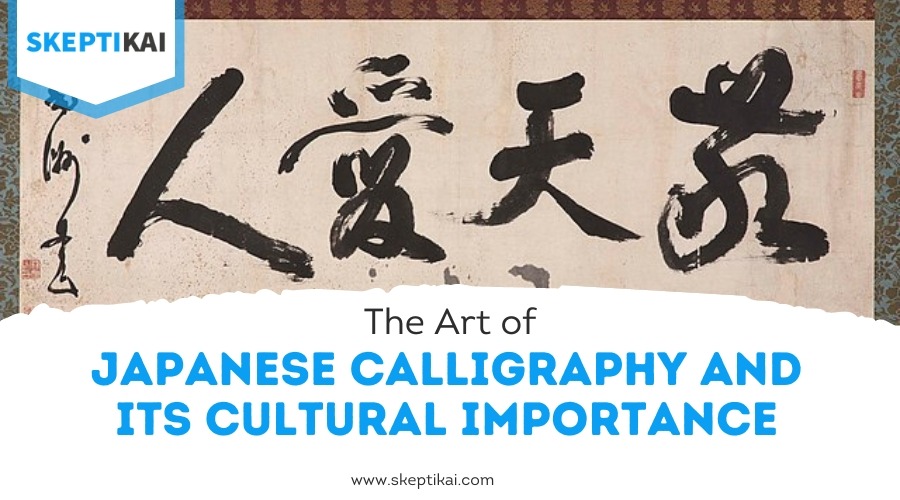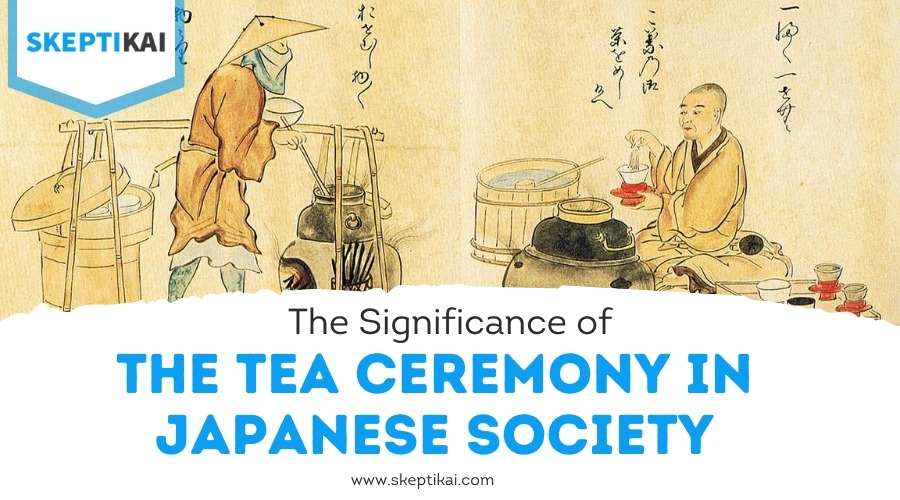Why Is Origami Important to Japanese Culture?
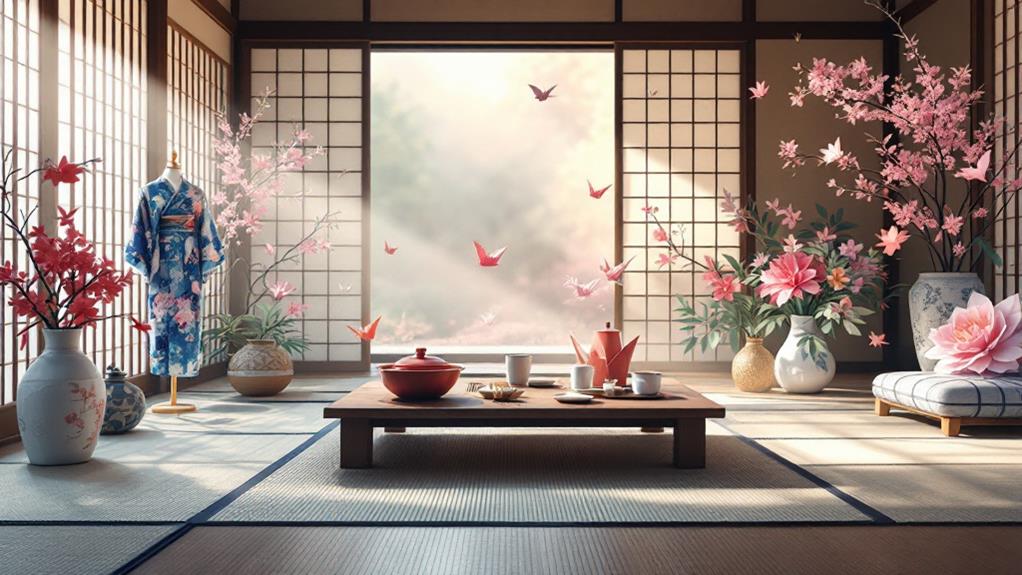
Origami holds a special place in Japanese culture, connecting you to centuries of tradition and stories. Initially a ceremonial art form, each fold in origami pieces like cranes carries deep symbolism for peace, luck, and longevity. Throughout your experiences in Japan, you'll see how origami reflects cultural values such as patience, mindfulness, and balance. It shapes art, ceremonies, and modern celebrations, bridging the past with the present. Participating in origami also improves cognitive skills and fosters a sense of community, while promoting cultural exchange globally. By folding paper, you inherit and preserve rich cultural narratives. For deeper understanding, there's more to investigate.
Historical Origins of Origami
Origami, an enchanting art form, traces its roots back to ancient Japan, where it gradually unfolded over centuries. As you investigate its history, you'll realize that origami wasn't just a pastime but an integral element of Japanese culture. The art form began with the introduction of paper to Japan from China during the 6th century. It was a luxury item, so paper folding was initially reserved for religious and ceremonial purposes. The precision and patience required in origami mirror the strong work ethic emphasized in the Japanese education system, where dedication and discipline are key values. You'll find that ancient techniques of origami weren't merely about creating beautiful shapes. These techniques were steeped in tradition and passed down through generations, often in secrecy. By mastering these ancient techniques, you would learn not only the precision and patience required for paper folding but also a deeper appreciation for Japanese history.
Over time, origami evolved, with artisans developing more complex designs and patterns. As you try your hand at these timeless methods, you're engaging in a practice that connects you to the past. The art of paper folding wasn't static; it adapted, reflecting the changing cultural and social landscapes of Japan. By exploring origami's historical origins, you gain insight into how a simple sheet of paper can tell a rich, intricate story.
Symbolism in Japanese Traditions
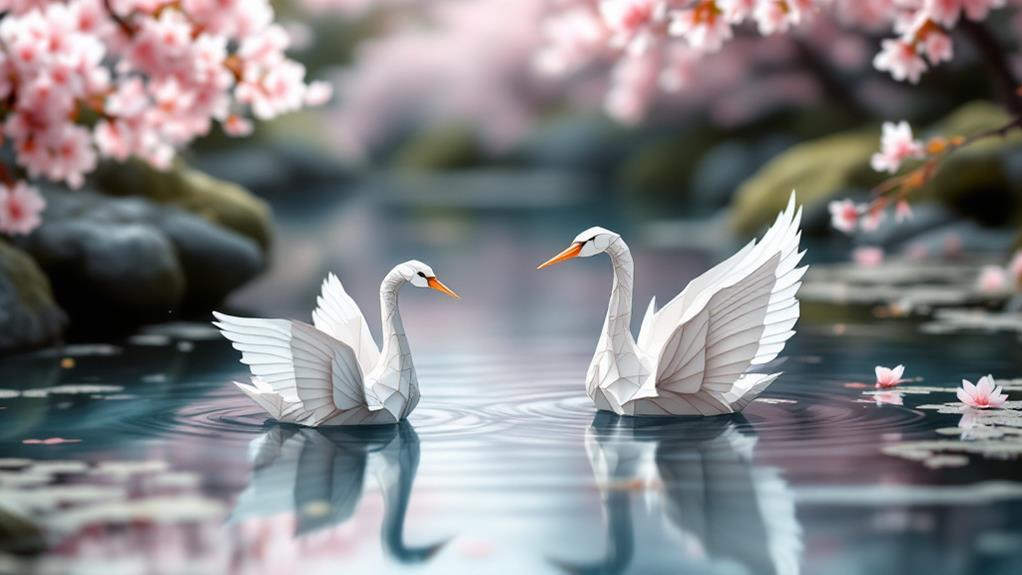
As you investigate the intricate art of paper folding, you'll uncover how deeply symbolism is woven into Japanese traditions. Origami, more than just an art form, acts as a vessel of cultural identity, carrying profound meanings in its folds. Each piece you fold isn't just a shape; it's a symbol, a story, and a piece of history. For instance, the crane, a prevalent figure in origami, symbolizes peace and longevity in Japanese culture. Likewise, the tea ceremony represents Japanese history and philosophy through its rituals, emphasizing harmony, respect, purity, and tranquility. When you fold a paper crane, you're not just crafting a bird; you're participating in a tradition that embodies hope and healing.
The act of paper folding also mirrors the values and philosophies that form the backbone of Japanese cultural identity. Precision, patience, and mindfulness are reflected in every fold, teaching you more than just technique. As you manipulate the paper, you're engaging with concepts such as harmony and balance, which are central to Japanese thought. Origami transcends its physical form to become a dialogue with the past, connecting you to generations of tradition and cultural expression. In every fold, you're not only crafting an object but also preserving a rich tapestry of Japanese cultural identity.
Role in Ceremonial Practices
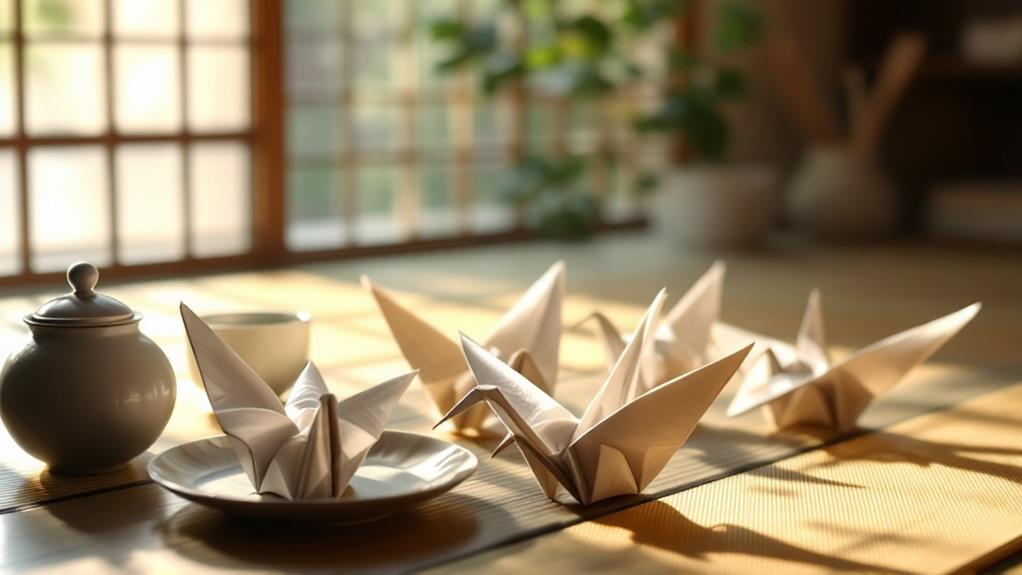
In diverse Japanese ceremonies, origami plays a significant role, adding layers of meaning and tradition. When you attend a Japanese wedding, you might notice origami cranes carefully placed as symbols of good fortune and longevity. This ceremonial folding isn't just decorative; it's steeped in ritual significance. The act of folding paper into shapes like cranes or butterflies can transform simple paper into powerful symbols, conveying wishes for happiness and prosperity to the couple.
During Shinto ceremonies, you might see origami folded into shapes that represent kami, the spirits or gods. These shapes are often used in offerings, serving as a bridge between the physical and spiritual domains. By participating in these practices, you're engaging in a ritual that connects you to the spiritual sphere, acknowledging the presence and influence of kami in everyday life.
Origami also plays a part in tea ceremonies, where the precision and mindfulness required for ceremonial folding mirror the values of the ceremony itself. The folded paper may hold sweets or be used as a decoration, enhancing the experience's aesthetic and ritual significance. Each fold you make is a gesture of respect, a tribute to ancient traditions that continue to thrive today.
Educational Benefits of Origami
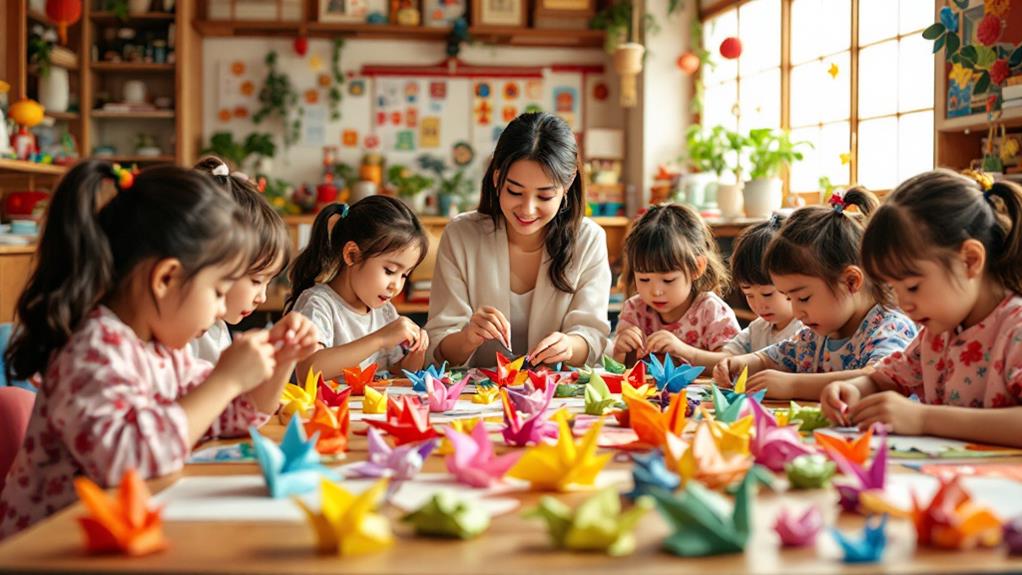
With origami, students can access a world of educational benefits that go beyond just folding paper. When you engage in origami, you enhance cognitive development by improving your ability to understand spatial relationships and geometric patterns. As you fold, your fine motor skills improve, refining your hand-eye coordination and precision. Origami also nurtures creative expression, offering a platform for you to investigate new designs and ideas.
You'll find that origami is a powerful tool in problem solving. It challenges you to think critically and adapt as you figure out how to transform a flat sheet into a complex figure. Moreover, origami introduces mathematical concepts, such as symmetry, fractions, and angles, in a hands-on manner that makes learning engaging and intuitive.
Investigating origami can also increase cultural awareness, connecting you to Japanese traditions and history. Its therapeutic benefits shouldn't be overlooked either; the act of folding can be calming, reducing stress and promoting mindfulness. In addition, origami encourages environmental education by using recycled paper, teaching sustainability. By integrating these aspects, origami becomes a multifaceted educational tool, enriching your learning experience in countless ways.
Influence on Japanese Art

The delicate art of origami has considerably shaped Japanese art, infusing it with a unique blend of simplicity and complexity. By mastering origami techniques, artists learn to appreciate the importance of balance and harmony, which are key aesthetic principles in Japanese culture. These principles are evident in traditional Japanese paintings, pottery, and even architecture, where the elegance of minimalism is celebrated. Origami teaches you to focus on the essence of the subject, using precise folds and creases to bring paper to life, which parallels how artists capture the spirit of their subjects with brushstrokes or sculpting methods.
Incorporating origami's aesthetic principles into broader art forms, Japanese artists often use similar techniques to create visual depth and intrigue. You can see this influence in textile designs, where intricate patterns echo the folds and layers found in origami. The discipline and patience gained from practicing origami also encourage artists to adopt detailed craftsmanship, evident in the careful construction of traditional garments like kimonos. By engaging with origami, artists develop a keen eye for detail and an appreciation for the beauty of understated elegance, leaving a lasting impact on Japan's rich art heritage.
Spiritual Significance of Paper Cranes

Folding a paper crane goes beyond creating a simple origami figure; it holds profound spiritual significance in Japanese culture. In crane mythology, the crane is considered a mystical creature, living for a thousand years and embodying longevity and good fortune. When you fold a paper crane, you're not just engaging in a craft; you're connecting with centuries of tradition and belief. Each fold carries the weight of hope and dreams for a better future.
The paper crane also stands as a powerful peace symbol worldwide. This was deeply reinforced by the story of Sadako Sasaki, a young girl affected by the Hiroshima bombing. She folded over a thousand cranes, hoping for peace and recovery. Her story has inspired millions to see each paper crane as an emblem of peace, resilience, and the human desire for harmony. By creating cranes, you participate in a global movement that promotes peace and remembers the tragedies of the past.
Origami in Modern Celebrations

Origami art forms have seamlessly woven their way into modern celebrations, adding a unique touch to events around the world. Regardless of you're hosting a birthday party or attending a wedding, origami offers a beautiful blend of tradition and modernity. Origami workshops have become popular at social gatherings, encouraging both children and adults to engage in creative expression while folding paper into intricate designs. These workshops foster family bonding, allowing everyone to participate in creating festive decorations that can be cherished long after the event.
Incorporating origami into celebrations promotes a sense of cultural fusion and artistic collaborations. Here are three ways you can include origami in your next event:
- Festive Decorations: Use origami to create stunning centerpieces or hanging ornaments that captivate your guests' attention.
- Community Events: Host an origami workshop to bring people together, fostering community spirit and collaboration.
- Artistic Favors: Offer guests personalized origami pieces as keepsakes, symbolizing the memorable moments shared.
Cultural Preservation Through Origami
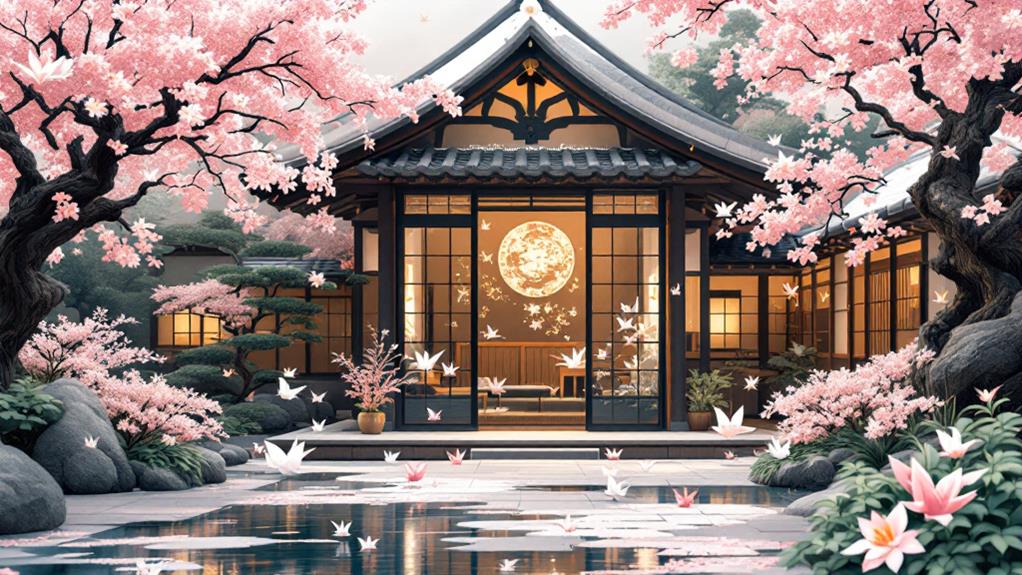
In the intricate folds of paper, origami preserves cultural narratives that might otherwise fade away. By engaging with origami, you connect with centuries-old traditions that reflect Japan's rich history. Each fold tells a story, and by practicing traditional techniques, you help keep these stories alive. Regardless of it's creating a crane, symbolizing peace and longevity, or folding a samurai helmet, embodying courage and strength, you become part of a lineage that values precision and artistry.
Participating in community workshops allows you to plunge deeper into this cultural preservation. These gatherings bring people together, fostering a sense of unity and shared purpose. In these workshops, experienced artists pass down their knowledge, ensuring that the art form thrives in modern times. You'll learn not just the folds but the significance behind each piece, gaining insights into how origami reflects societal values and beliefs.
Origami as a Global Ambassador

As you travel across the world, the delicate art of origami serves as a bridge connecting diverse cultures. It transcends language barriers, allowing you to engage in cultural exchange through shared creativity. Origami techniques are taught in global workshops, where people from different backgrounds come together to fold paper and share their cultural stories. These gatherings foster artistic collaborations, sparking new ideas and blending traditions to create unique pieces of art.
Origami also plays a crucial role in educational outreach, teaching mathematical concepts and fostering problem-solving skills in schools worldwide. It encourages community engagement, where individuals unite in folding sessions, celebrating both the simplicity and complexity of this ancient art form. Furthermore, international competitions showcase origami's versatility, inspiring participants to push the boundaries of what can be achieved with paper.
Sustainability practices are at the heart of origami's global influence. Many artists now focus on using recycled materials, promoting environmental consciousness through their creations. Here are three ways origami acts as a global ambassador:
- Promotes cultural exchange: Unites individuals across the globe.
- Encourages artistic collaborations: Combines diverse artistic styles.
- Advances educational outreach: Improves learning through creative expression.

